Ditapis dengan
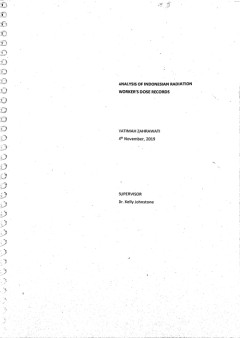
Analysis of Indonesian Radiation Worker's Dose Records 2019
Exposure to ionozing radiation in known to have negative impacts on humans due to its ability to ionize any material, including human cells.
- Edisi
- -
- ISBN/ISSN
- -
- Deskripsi Fisik
- xi, 57p;20x29cm
- Judul Seri
- -
- No. Panggil
- 331.5 ZAH A
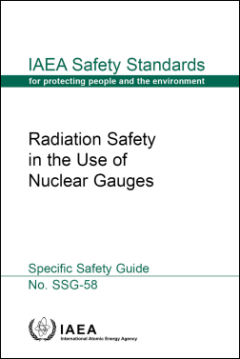
Radiation Safety in the Use of Nuclear Gauges - Specific Safety Guide - IAEA …
There are several hundred thousand nuclear gauges incorporating a radioactive source or a radiation generator in use all over the world. They have been used in a wide range of industries to improve the quality of products, optimize processes, and save energy and materials. The economic benefits have been amply demonstrated, and there is clear evidence that nuclear gauge technology can be used s…
- Edisi
- -
- ISBN/ISSN
- 978-92-0-106019-8
- Deskripsi Fisik
- 97 hal, 1.19 MB
- Judul Seri
- -
- No. Panggil
- -
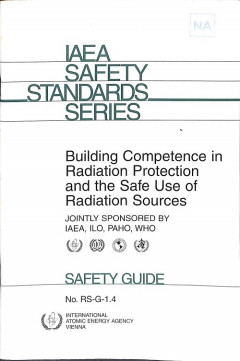
Building Competence in Radiation Protection and the Safe Use of Radiation Sou…
This Safety Guide, co-sponsored by the ILO, PAHO and WHO, makes recommendations concerning the building of competence in protection and safety within a national radiation protection infrastructure, and provides guidance for setting up the structure for a national strategy. It relates to the training and assessment of qualification of new personnel and the retraining of existing personnel in ord…
- Edisi
- -
- ISBN/ISSN
- 9201007019 / 1020525X
- Deskripsi Fisik
- 37 p. : Illus. ; 24 cm
- Judul Seri
- Safety Standards Series No. RS-G-1.4
- No. Panggil
- -
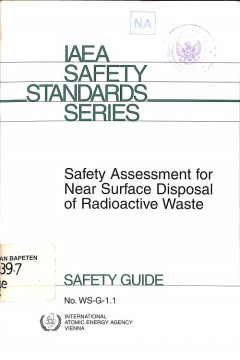
Safety Assessment for Near Surface Disposal of Radioactive Waste
This Safety Guide provides recommendations on how to meet the requirements related to safety assessment in the Safety Requirements publication, Safety Standards Series No. WS-R-1, Near Surface Disposal of Radioactive Waste. It addresses the subject of safety assessment for near surface disposal of radioactive waste and provides guidance on approaches to performing safety assessments in the cont…
- Edisi
- -
- ISBN/ISSN
- 9201012993 / 1020525X
- Deskripsi Fisik
- 31 p. : Illus. ; 24 cm
- Judul Seri
- Safety Standards Series No. WS-G-1.1
- No. Panggil
- 621.0397 IAE s
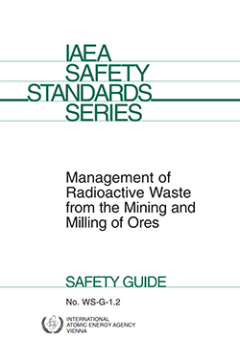
Management of Radioactive Waste from the Mining and Milling of Ores, Safety G…
This Safety Guide provides recommendations and guidance on the safe management of radioactive waste resulting from the mining and milling of ores, with the purpose of protecting workers, the public and the environment from the consequences of these activities. It supplements Safety Standards Series No. WS-R-1, Near Surface Disposal of Radioactive Waste.
- Edisi
- -
- ISBN/ISSN
- 9201158025 / 1020525X
- Deskripsi Fisik
- 39 p. : Illus. ; 24 cm
- Judul Seri
- Safety Standards Series No. WS-G-1.2
- No. Panggil
- -
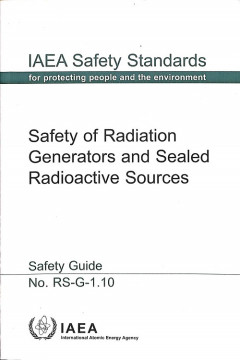
Safety of Radiation Generators and Sealed Radioactive Sources, Safety Guide
The objective of this Safety Guide is to assist Member States in implementing regulatory requirements for radiation sources that will ensure their safety. To that end, this publication provides guidance on infrastructure responsibilities for safety, on methodologies for performing safety assessments and on specific design and operational measures that should be taken to ensure safety throughout…
- Edisi
- -
- ISBN/ISSN
- 9201075065 / 1020525X
- Deskripsi Fisik
- 59 p. : Illus. ; 24 cm
- Judul Seri
- Safety Standards Series No. RS-G-1.10
- No. Panggil
- -
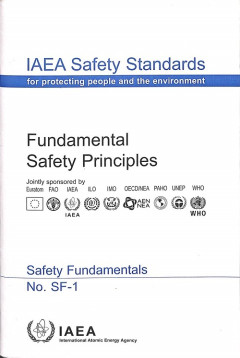
Fundamental Safety Principles, Safety Fundamentals
This publication states the fundamental safety objective and ten associated safety principles, and briefly describes their intent and purpose. The fundamental safety objective — to protect people and the environment from harmful effects of ionizing radiation — applies to all circumstances that give rise to radiation risks. The safety principles are applicable, as relevant, throughout the en…
- Edisi
- -
- ISBN/ISSN
- 9201107064 / 1020525X
- Deskripsi Fisik
- 21 p. : Illus. ; 24 cm
- Judul Seri
- Safety Standards Series No. SF-1
- No. Panggil
- -
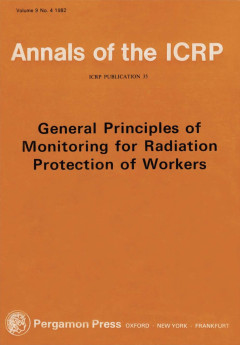
Annals of the ICRP (ICRP Publication 35): General Principles of Monitoring fo…
At its meeting in May 1978, Committee 4 on the application of the Commission’s Recommendations decided to revise ICRP Publication I?: “General Principles of Monitoring for Radiation Protection of Workers”, adopted in May 1968, in order to achieve coherence with the Commission’s Recommendations published in ICRP Publicatiorl26: “Recommendations of the International Commission on Ra…
- Edisi
- -
- ISBN/ISSN
- 0-08-029816-8
- Deskripsi Fisik
- 36 p.
- Judul Seri
- -
- No. Panggil
- -
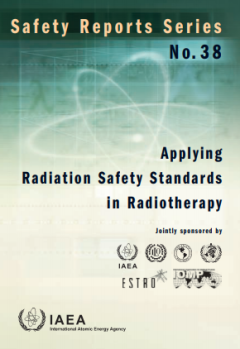
Safety Series No.38 Radiation Produres
The International Basic Safety Standards for Protection against Ionizing Radiation and for the Safety of Radiation Sources (the ‘Standards’ or ‘BSS’) were published as IAEA Safety Series No. 115 in 1996 [1]. This publication was the culmination of efforts over past decades towards harmonization of radiation protection and safety standards internationally, and was jointly sponsored by th…
- Edisi
- -
- ISBN/ISSN
- -
- Deskripsi Fisik
- -
- Judul Seri
- -
- No. Panggil
- -
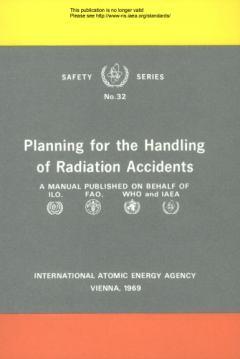
Safety Series No.32 Planning for the Hendling of Radiation Accidents
public authorities and others who are responsible for preparing emergency plans for the handling of radiation accidents with the aim of minimizing the resulting exposure of workers and of m embers of the public, and of reducing as far as , practicable any damage to property. This guidance m ust necessarily be of a general nature as it is not possible to predict with any precision the form which…
- Edisi
- -
- ISBN/ISSN
- -
- Deskripsi Fisik
- -
- Judul Seri
- -
- No. Panggil
- -
 Karya Umum
Karya Umum  Filsafat
Filsafat  Agama
Agama  Ilmu-ilmu Sosial
Ilmu-ilmu Sosial  Bahasa
Bahasa  Ilmu-ilmu Murni
Ilmu-ilmu Murni  Ilmu-ilmu Terapan
Ilmu-ilmu Terapan  Kesenian, Hiburan, dan Olahraga
Kesenian, Hiburan, dan Olahraga  Kesusastraan
Kesusastraan  Geografi dan Sejarah
Geografi dan Sejarah